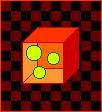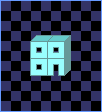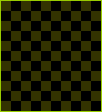G L O S S A R Y
Attribute |
Attributes are the characteristics of content objects and topics—information about those objects, stored with them in the database. See Content Object Attributes or Topic Attributes. return |
|
Component |

Components are the raw media atoms that make up content objects. Component types include text types such as paragraph, bullet list, numbered list, and table, and other media types such as photograph, graphic, audio narration, other audio types, video types, animation types, executable macros, and so on. Components stored in a database, such as photographs or audio clips, are identified and searchable by name, subject area, and component type. There may be some additional attributes specific to some types of media. For example, video may have time related attributes, where text would not. Some component types, such as text components, may be not stored separately in a database but incorporated directly into a content object. return |
|
Content Object |

In the assembly of learning or support topics, a content object:
A content object is a smaller granule of content than a topic. Not only is it smaller in the amount of content but it is also smaller in the purpose of the content. A topic has a single instructional or performance goal, such as:
The topic will have one or more content objects, each of which provides a single type of interaction to help achieve that goal, such as:
Content objects are the individual pieces that are combined to produce the learning or performance outcome of the topic. return |
|
LearningBase™ |
To store and manage topics and content objects, Oracle will offer the LearningBase, which will be part of the Oracle Learning Architecture. The LearningBase will store and manage content objects, topics, and topic groups, keep track of user records and test scores, and generate reports. It will have an administration interface allowing topics to be added, modified, or collected into topic groups. The LearningBase will also serve as a content base for authoring tools. Components may be stored directly in the LearningBase or may be in an external media database linked via an API. return |
|
Learning Agent™ |
The Learning Agent is the interface for the end user and will be part of the Oracle Learning Architecture. It will be a browser-side Java applet to ensure cross-platform and cross-browser compatibility. It will handle login to the system, search and selection of topics and topic groups, and navigation between topics and topic groups. return |
|
Topic |

A topic is a small but complete instructional or performance support interaction--probably more than a page, but certainly less than a full course. Topics are the smallest unit identified to users (such as learners). A topic has a single instructional objective or performance support goal. A topic can contain one or more content objects. Examples of topics:
|
|
Topic Group |

Topics—such as lessons or searchable reference job aids—will, of course, be combined into topic groups: purposeful collections of topics such as courses, curricula, help systems, and custom learning paths. This linking of topics into topic groups can be done by the creator at the time of creation or later by others who need to assemble collections of content for specific needs. return |
|
home | glossary | credits | tell us what you think | © 1997 Oracle Corp.